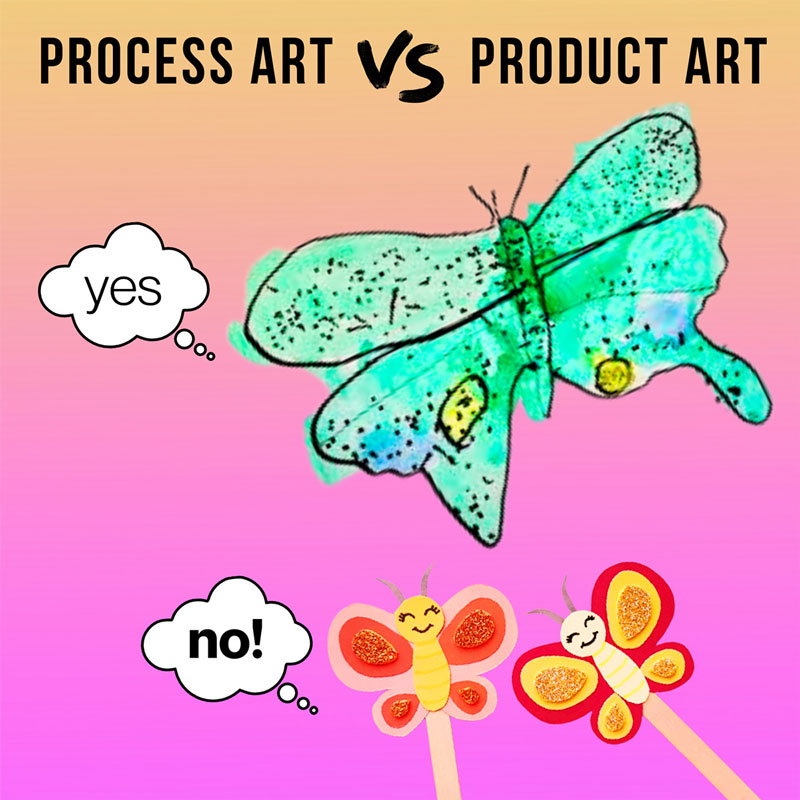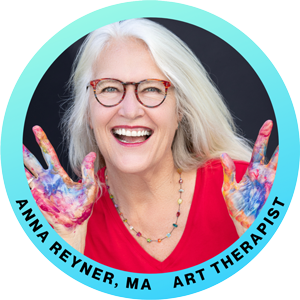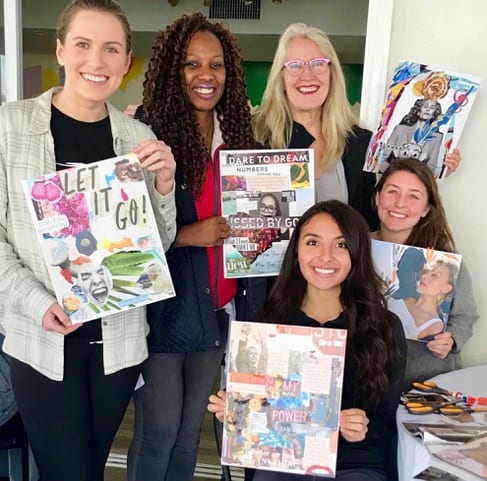Hello and Happy Spring!
Open ended art has been on my mind lately. Educators tell me many teachers still deliver product art activities. Doing product art with children might be an obvious TABOO to trained educators, but many teachers and programs still struggle with defining art as a process.
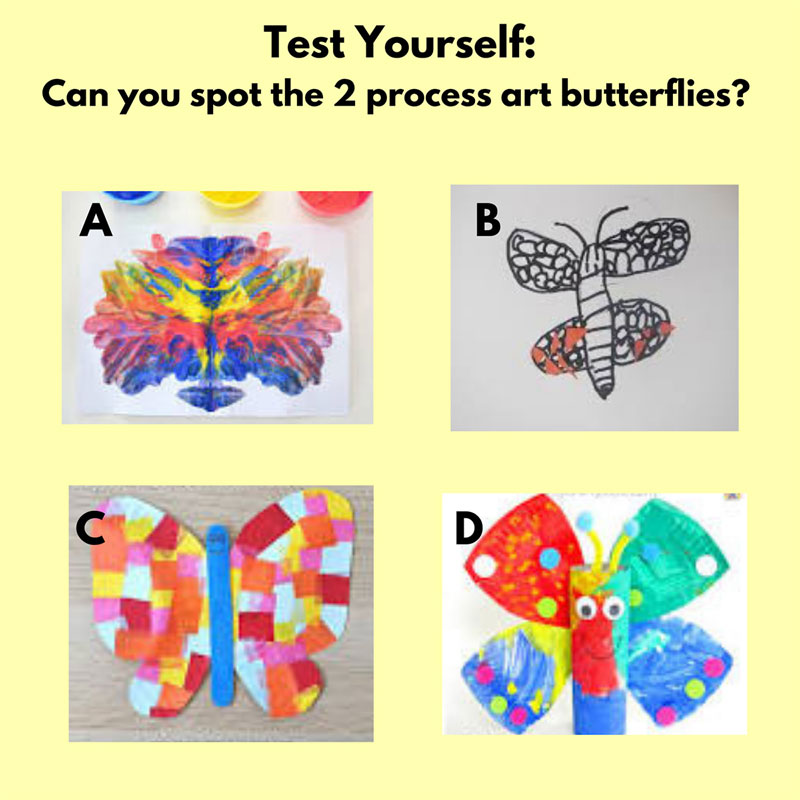
When teachers “know better,” why do they still deliver cookie cutter crafts as art? The main reason may be simple… that old habits are hard to break. We used to do product art, but then…we used to think the earth was flat as well. Things change for a reason, they improve.
Hopefully you answered A and B in the spot quiz above. Picture A is “blotter painting,” an easy form of process art that creates symmetry and splashes of color. Picture B is my personal favorite, observational drawing from real life.
Let’s examine how Picture B was made. As you can see from the photos below, butterflies are studied closely then used as inspiration. Do these photographs of children in action inspire you? I hope so. Because this way of approaching BUTTERFLY ART is authentic, engaging and has children learning every step of the way. It’s also calming and helps children self-regulate with art.
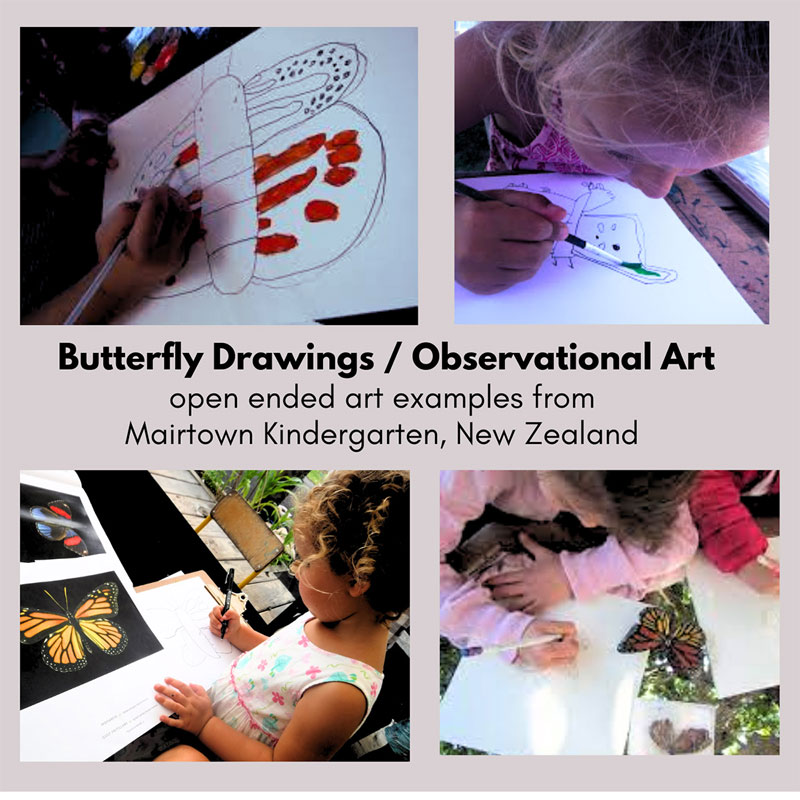
Why does PROCESS ART matter? Process art helps children go deeper, product art does not. Process art is trauma-informed, product art is not. Process art opens up childrens minds to a world of self discovery, product art does not.
With all that we have on our plate as educators, it’s important not to waste time doing superficial activities like cookie cutter crafts.
Process & Product in Trauma Informed Care
There are distinct differences between process art and product art, and these differences are important to understand in trauma-informed care. Simply stated, in product art, the teacher is in charge, and in process art, the child is in charge. In trauma-informed care, one of our main goals is to enable children to regain control of their own life experience as much as possible. Process art offers choice and control while expanding the brain’s capacity for learning; therefore, process art is always the best approach.
Part of learning to deliver process art is learning to asking the right questions. Print out this guide if you think it will help.
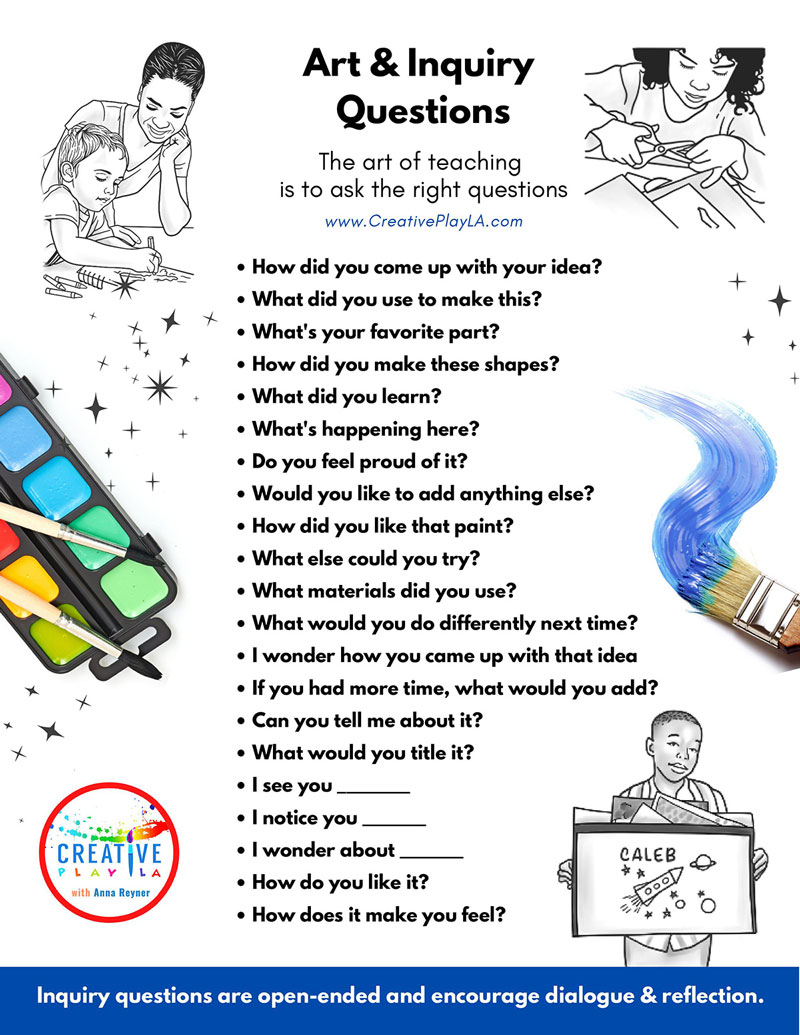
Check out this Video Montage of recent CreativePlayLA Winter Workshops with Teachers doing Process Art
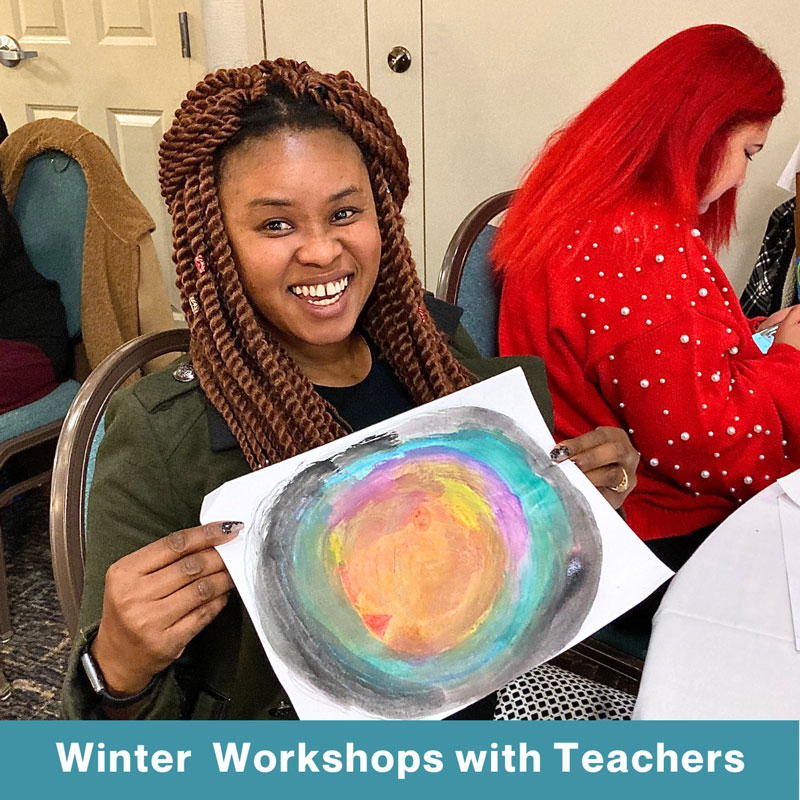
Have fun drawing and painting butterflies this Spring, and please help spread the word about THE HEALING POWER OF ART.
Thank you for taking the time to read my thoughts and share your experiences. I hope you enjoy connecting with like minded spirits as much as I do.

